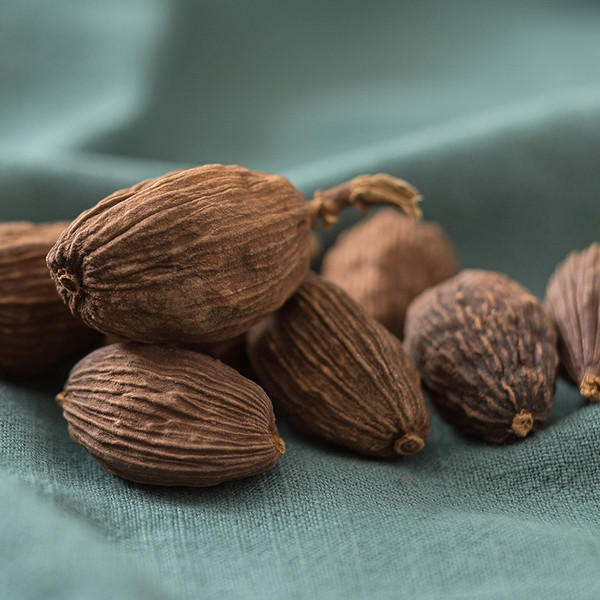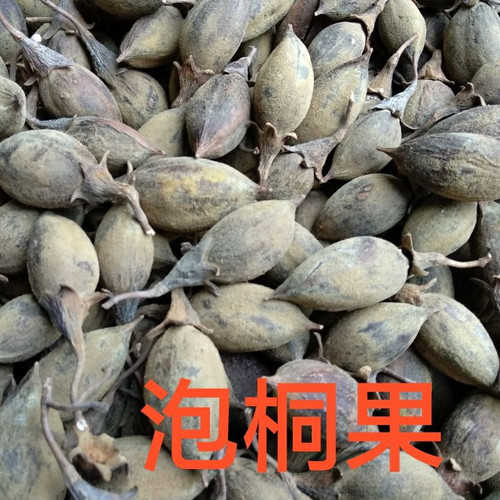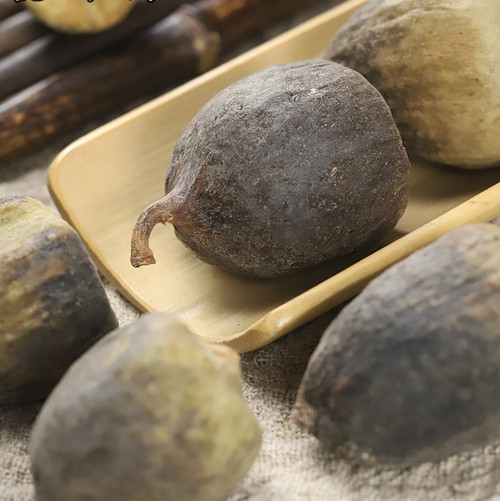Product Overview
Parts used: Dried ripe fruit
TCM category: Aromatic herbs that transform Dampness
TCM nature: Warm
TCM taste(s): Pungent
Meridian affinity: Spleen Stomach
Scientific name: Amomum tsao-ko
Other names: Caoguo
Use of tsaoko fruits (Cao Guo) in TCM
Please note that you should never self-prescribe TCM ingredients. A TCM ingredient is almost never eaten on its own but as part of a formula containing several ingredients that act together. Please consult a professional TCM practitionner, they will be best able to guide you.
Preparation: Dry fry the fruit until the outer skin is yellow and swollen and remove the skin. Crush before use.
Dosage: 3-6g.
Main actions according to TCM*: Dries and warm Cold-Dampness, removes phlegm and treats malaria
Primary conditions or symptoms for which tsaoko fruits may be prescribed by TCM doctors*: Abdominal pain Abdominal colic Vomiting Malaria Constipation
Common TCM formulas in which tsaoko fruits are used*:
For Damp-Cold in the Spleen combine tsaoko fruits with atractylodes rhizomes (Bai Shu) and houpu magnolia bark (Hou Pu).
Key TCM concepts behind tsaoko fruits (Cao Guo)'s properties
In Traditional Chinese Medicine (TCM), tsaoko fruits are plants that belong to the 'Aromatic herbs that transform Dampness' category. This category of herbs resolves a TCM condition called 'Cold Damp Stagnation', especially as it affects the Stomach and Spleen. In modern medicine this often translates into symptoms such as distended chest and abdomen, lack of appetite, nausea and vomiting
As suggested by its category tsaoko fruits are plants that are Warm in nature. This means that tsaoko fruits tend to help people who have too much "cold" in their body, although with less effect than a plant that would be Hot in nature. Balance between Yin and Yang is a key health concept in TCM. Those who have too much cold in their body are said to either have a Yin excess (because Yin is Cold in nature) or a Yang deficiency (Yang is Hot in Nature). Depending on your condition tsaoko fruits can help restore a harmonious balance between Yin and Yang.
Tsaoko fruits also taste Pungent. The so-called "five elements" theory in Chinese Medicine states that the taste of TCM ingredients is a key determinant of their action in the body. Pungent ingredients like tsaoko fruits tend to promote the circulations of Qi and body fluids. That's why for instance someone tends to sweat a lot when they eat spicy/pungent food.
The tastes of ingredients in TCM also determine what organs and meridians they target. As such tsaoko fruits are thought to target the Spleen and the Stomach. In TCM the Spleen assists with digestion, blood coagulation and fluid metabolism in the body. The Stomach on the other hand is responsible for receiving and ripening ingested food and fluids. It is also tasked with descending the digested elements downwards to the Small Intestine.









